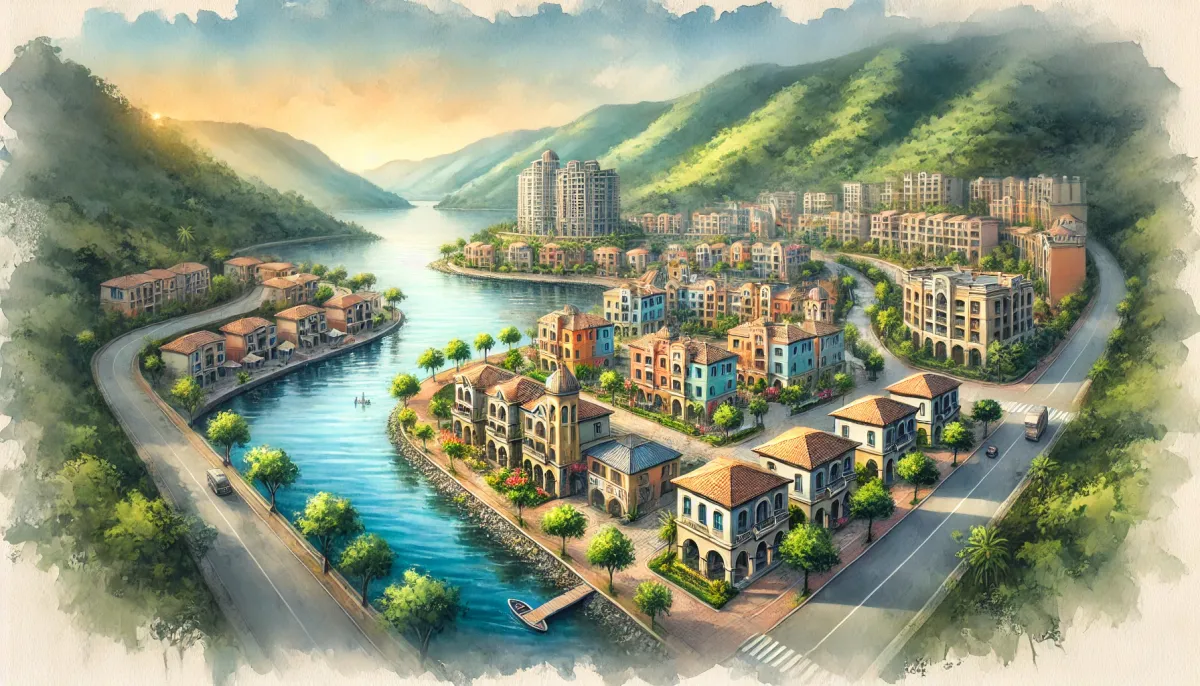Lavasa

Lavasa, India’s first private planned city, was envisioned as a modern hill town inspired by Portofino, Italy. Located in Maharashtra’s Western Ghats, it was designed to be a self-sustaining urban hub, featuring luxury residences, resorts, IT parks, and educational institutions. Developed by HCC (Hindustan Construction Company), Lavasa promised world-class infrastructure, scenic landscapes, and a vibrant economy. However, legal disputes, environmental concerns, and financial mismanagement halted construction, leaving much of the city unfinished and underpopulated. Originally planned to house 300,000 residents, Lavasa became a cautionary tale of private urbanization, struggling with debt and regulatory challenges. Despite its decline, discussions continue on reviving Lavasa, either as a smart city, tourism hub, or educational retreat, repurposing its existing infrastructure.
Lavasa is a planned city, not just a district. Located in the Western Ghats of Maharashtra, India, it was developed by the Lavasa Corporation as a hill station-style town. Conceived in the early 2000s, Lavasa was designed to be a self-sustaining urban center with residential areas, commercial zones, and tourism facilities, aimed at attracting high-net-worth individuals and international businesses.
Although it remains under development, Lavasa is intended to be a new city with its own infrastructure, zoning, and governance, rather than simply an extension of an existing city. The city features modern amenities, residential communities, and recreational spaces set amidst lush green surroundings. However, Lavasa has faced significant legal and environmental challenges, and its growth has been slower than initially anticipated. Despite this, it remains a distinct, planned urban development and not just a district within a larger city.
Lavasa began with an ambitious vision but has failed to meet its population and economic targets. Despite its scenic appeal and initial hype, it remains a cautionary tale of overambition, poor execution, and a lack of sustainable economic drivers.
Strengths:
- Master-Planned Design: Lavasa was India’s first private, planned hill city, modeled on international examples like Portofino, with the goal of offering a picturesque environment, top-tier infrastructure, and modern amenities.
- Early Investment and Development: The city attracted initial attention from businesses, educational institutions, and hospitality chains, creating a promising foundation for a mixed-use urban community.
- Scenic Location: Set in the Western Ghats, Lavasa was marketed as a unique destination for residents, tourists, and corporations looking for an alternative to congested Indian metros.
Challenges:
- Severely Underpopulated: Lavasa never attracted the large resident population it was built to accommodate. Many homes and facilities remain empty.
- Financial and Legal Troubles: Protracted legal battles, debt issues, and regulatory hurdles significantly delayed construction, leading to investor pullouts and loss of momentum.
- Limited Economic Base: The city was heavily reliant on tourism and second-home buyers, with no major industrial or employment hubs to sustain long-term growth.
- Image Problems: Negative press and controversies over land acquisition, environmental impact, and financial mismanagement tarnished Lavasa’s reputation, further discouraging potential buyers and investors.
| Year | Population Estimate |
|---|---|
| 2010 | ~10,000 |
| 2015 | ~1,144 |
| 2020 | ~1,002 |
| 2024 | ~5,000 |
| 2030 | 200,000 |




